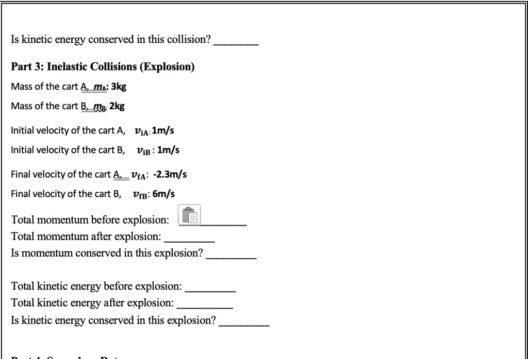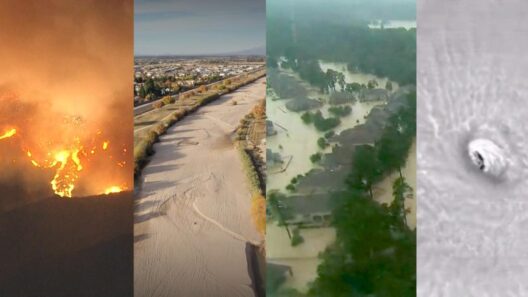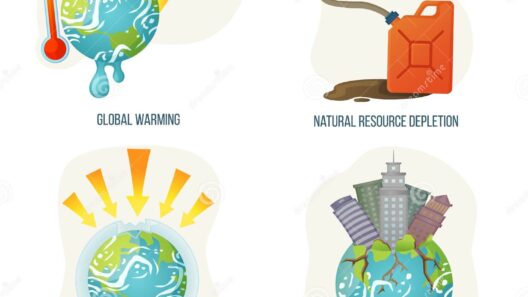The United States, as one of the largest greenhouse gas emitters globally, bears a significant responsibility in the fight against climate change. The urgency of the climate crisis compels immediate action to reduce emissions and mitigate its catastrophic repercussions. Various sectors, including energy production, transportation, agriculture, and manufacturing, contribute to the overall carbon footprint of the nation. Understanding the intricate interplay between these sectors and the pathways to emissions reduction is pivotal in developing effective strategies for a cooler planet.
At the heart of climate action lies the transition to renewable energy sources. The fossil fuel industry has long dominated the US energy landscape, significantly driving greenhouse gas emissions. However, the increasing viability of renewable sources such as wind, solar, and hydroelectric power presents an opportunity to drastically reduce emissions. In 2019, renewables accounted for about 11% of total U.S. energy consumption. This number is expected to rise as technological advancements enhance efficiency and lower costs for consumers.
Moreover, the adoption of electric vehicles (EVs) signifies a profound shift towards sustainable transportation. The U.S. transportation sector is a substantial contributor to fossil fuel emissions, primarily through gasoline and diesel use. By encouraging the use of electric vehicles, the U.S. can diminish its reliance on fossil fuels and lower emissions significantly. Charging infrastructure must expand, and consumers must be educated on the benefits of EVs. However, the current challenge lies in ensuring that the electricity fueling these vehicles is sourced from renewables rather than traditional fossil fuels.
A critical but often overlooked aspect of climate action is sustainable agriculture. Agricultural practices not only contribute emissions through the use of machinery and fertilizers but also represent a significant opportunity for carbon sequestration. Techniques such as no-till farming, crop rotation, and agroforestry can enhance the carbon content of soil, preserving its health and ecology. Organic farming further minimizes reliance on synthetic inputs, thereby reducing overall emissions while promoting biodiversity. Engaging farmers and stakeholders in the adoption of these practices is essential for making a substantial impact.
Western nations, in particular, may tend to view climate action through a technical lens, focusing on technological advancements and policies. However, the social dimensions of climate action are equally crucial. Climate change disproportionately affects marginalized communities, often exacerbating existing inequalities. The U.S. must prioritize environmental justice within its climate initiatives by ensuring that vulnerable populations are included in decision-making processes. This inclusivity not only enhances the efficacy of climate policies but also fosters community resilience against climate impacts.
Moreover, building resilient infrastructure is paramount to withstand the effects of climate change. Cities across the U.S. face increased risks from flooding, heatwaves, and hurricanes, exacerbated by climate change. An investment in climate-resilient infrastructure can protect communities and promote adaptive growth. For example, incorporating green spaces into urban planning can mitigate heat and enhance stormwater management. These restorative efforts, alongside emissions reduction programs, present an integrated approach to not only combatting climate change but also enhancing urban living conditions.
The role of policy cannot be overstated when discussing U.S. climate action. Effective legislation, such as the Green New Deal and other climate-friendly policies, enables systematic changes across multiple sectors. Federal, state, and local governments must collaborate to set ambitious emissions reduction targets aligned with global climate goals. Market-based approaches, such as cap-and-trade systems and carbon pricing, can incentivize emissions reductions while generating revenue for green initiatives. Robust policy frameworks create an environment conducive to innovation and sustainability, granting businesses the clarity and predictability needed to invest in green technologies.
Despite the prevailing skepticism, public sentiment in the U.S. increasingly favors climate action. Grassroots movements and advocacy groups play an indispensable role, raising awareness about the effects of climate change and mobilizing citizens for collective action. Younger generations, in particular, have prioritized environmental issues, pushing for transformative reforms that address climate change as an existential threat. This rising consciousness presents a unique opportunity to reframe the narrative around climate action from a burden to an avenue for economic growth and social equity.
Education serves as a cornerstone in cultivating an informed citizenry capable of engaging with climate issues critically. Educational institutions should incorporate climate science into curricula at all levels, fostering a sense of stewardship over the planet. Promoting awareness about the interconnectedness of ecosystems further empowers individuals to advocate for sustainable practices. Public education campaigns can galvanize support for local initiatives, reinforcing the notion that individual and collective actions contribute to the broader goal of emission reduction.
Moreover, international cooperation stands vital in addressing climate change at a global scale. Climate action transcends national borders; global problems necessitate global solutions. The United States, as a key player on the world stage, should lead by example, reaffirming commitments to international agreements such as the Paris Accord. Collaborative efforts to share technology, funding, and research can strengthen climate resilience worldwide, making the planet cooler for current and future generations.
In conclusion, reducing emissions for a cooler planet requires multifaceted strategies encompassing renewable energy, sustainable agriculture, and inclusive policies. The responsibility entails not only transitioning to low-carbon technologies but also ensuring that climate action addresses social equity. Collectively, as individuals advocate for change, and policymakers strive for ambitious goals, the U.S. can pave the way for significant emissions reductions. By embracing innovative solutions and fostering collective engagement, the potential for a more sustainable future remains within reach.






